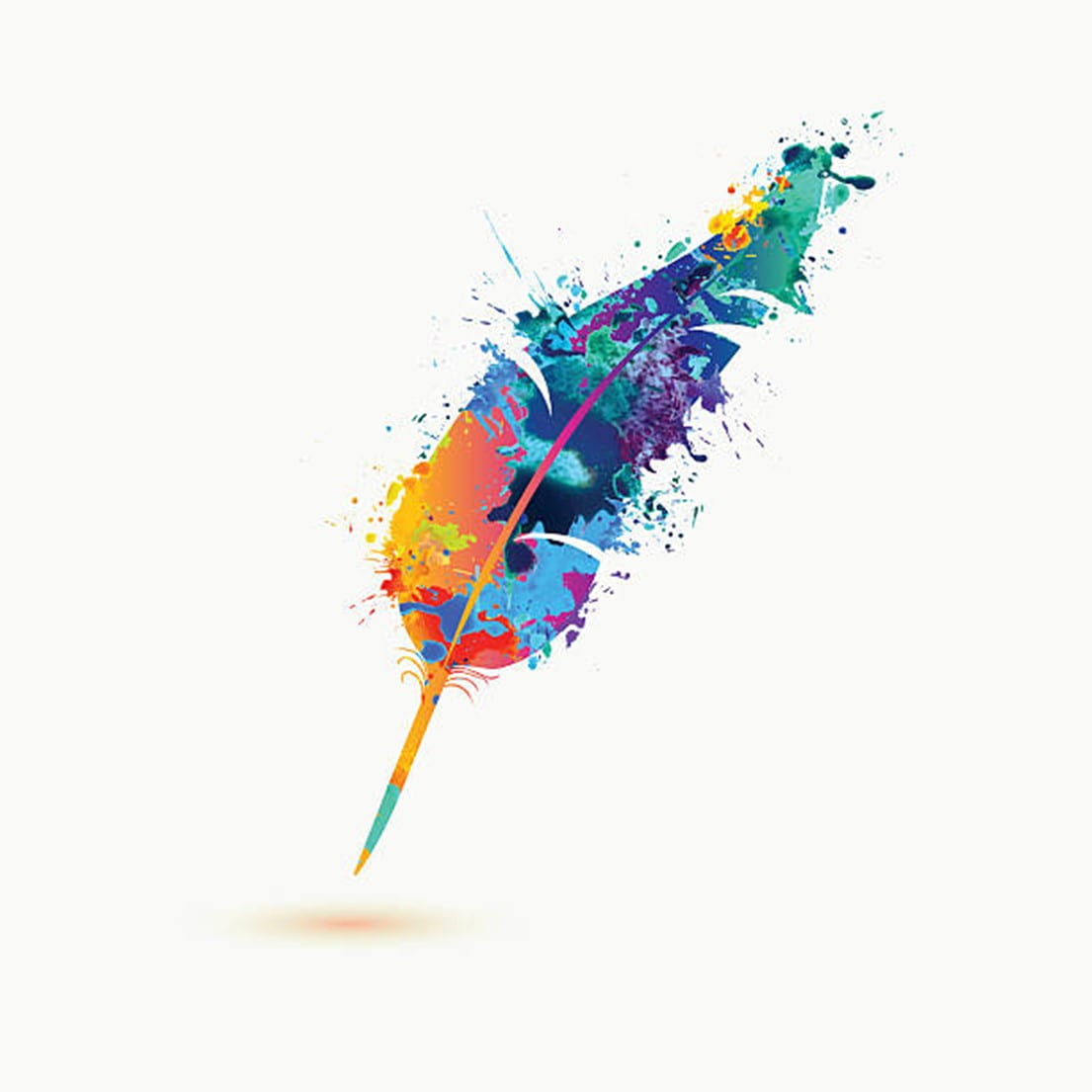 By Dr. Julia Manini (Ed.D/M.R.E/B.Ed/Principal)
By Dr. Julia Manini (Ed.D/M.R.E/B.Ed/Principal)
Before there were manuals to instruct, googles to search, timely TikTok consultations to inform and insta(nt) “posts” to “feed” us, there lived the magic of the unwielded imaginings of our childhood—a time where the unscreened possibility, of spaces and ideas, parts and places, creatures and people…were all coloured by the canvas of our imagination. But as it does, time has a way of callousing the parts of us that most require the malleability, fluidity, and possibility of our child-like selves. We allow filters to be placed on our growth in ways that prevent our authentic selves from courageously exposing the status quo for its download on our most humanizing element—our capacity to imagine what does not yet exist.
Somehow, as we enter adulthood, we move offline from our imaginations and disconnect from our creative force. Rather than uploading progress, we allow our bandwidth to be stifled by the regime of expectation, as we browse the norms and dominant ideologies that overwhelm our systems.
And so, rather than shutting down the potential that exists when we choose to delete the imagination from our human hard drives, terming it obsolete, perhaps it is time for a reboot of the central system of educational leadership.
We have an opportunity to reposition our homepages with creative courage, to recode our minds and hearts in ways that reveal to those we serve that they are embedded in our strategies and the influencers of our decision-making. We have the software to make our passion for people the interface that hyperlinks our collaborative capacities, while creating a database for understanding more fully the complexity of human programming. As we repower our systems, we can empower our stakeholders to reformat our practices alongside us, to create networks of authentic learning and living.
 And so, I return to a time when words on the page scribed by the pens of the imagination offer us a knowing that cannot be searched, but instead, must be felt—where truth cannot be swiped away from its perch upon our hearts. In a time where the themes of politics, religion, class, culture, race, gender, and identity are powerfully positioned to alter the story of education, I imagine a leadership inspired not by trends in theories or practices, but by the steadfast brilliance of our imaginations, where Dickenson’s notion that, “hope is the thing with feathers” colours the ethos of leadership. This is a space where, as leaders, we know that what is needed most poignantly in our work, the keys to our success, are such “feathers”; plumes of the imagination that have the potential to colour our work with the brilliance of its aspiration.
And so, I return to a time when words on the page scribed by the pens of the imagination offer us a knowing that cannot be searched, but instead, must be felt—where truth cannot be swiped away from its perch upon our hearts. In a time where the themes of politics, religion, class, culture, race, gender, and identity are powerfully positioned to alter the story of education, I imagine a leadership inspired not by trends in theories or practices, but by the steadfast brilliance of our imaginations, where Dickenson’s notion that, “hope is the thing with feathers” colours the ethos of leadership. This is a space where, as leaders, we know that what is needed most poignantly in our work, the keys to our success, are such “feathers”; plumes of the imagination that have the potential to colour our work with the brilliance of its aspiration.
Hardwiring Hope
Hope allows us to transcend hierarchies, to imagine spaces where the rhythms of difference resound and reverberate as symphony rather than as the cacophony of injustice, discrimination, bias, exclusion, and inequity that are the clashing cymbals of disparity in our midst. Here, imagination would dismantle our classrooms, both the figurative and literal ones, bringing down the walls that barricade our minds into thinking that potential is limited. It would do away with restraints on our ability, championing us to scale, bound, and land on new terrain, ready for the enlivened steps of those who feel the greatness of the other side.
Hope is the only filter we need through which to view the images of possibility in education. In this hope-filled place, land is not acknowledged but understood as a space where the human condition has either been denied or honoured, where race is more liberating than limiting. In such imaginings, gender cannot be defined by binary systems, intentions are not calculated, and conflict does not divide but marries spaces for radical understanding. Here is where identity and knowing are the likes of our daily pages.
Imagining more than meets the eye…
Yet, we question how to move such hope from its perching into flight. If hope is the feathered thing of our imaginations, then leadership brushed with its quill, has the capacity to carry education into soaring heights. If we are to take flight, however, we must first ground our practices in its wisdom. Here, leaders recognize that on the other side of conflict lives an edification of the space between—where friction shapes the unknown into understanding. We craft frameworks and policies to serve people not products and know that our epistemology is grounded in humanity and not rooted in the weeds of dominant thinking. When hope is the soil of our imaginings, the heart of education is just that—the heart…seeking to know, to speak, to grow alongside the other seeds in our midst.
The feathers of our imagination are what move us into a triangulation that analyzes the intersection of personhood, potential, and self-efficacy. Here, action plans are oriented towards humanizing experiences, compass points for elevating the lived realities that should be the natural destination for “improvement”. Where assessment and evaluation are not rooted in mandated markings on a graph but are charted by growth and the development of potential.
Imagination moves us beyond tapings of bureaucracy and positionality offering the liberty of narratives that navigate us towards more promising ways of telling our stories of humaneness.
Here, courage is the mortar that “sticks” to the bricks of our capacity building and privilege is bifocaled by truth. With the imagination as our compass, what was once relegated to the “margins” centers us on the interior work still required. Such feathers create a palpable history that redefine our present and propel us into a more palatable future. Where our progress reports are marks on our conscience and our aptitude for leading with love. Once the perch is abandoned, soft skills are hardened into the moulds that shape our educational philosophies and compassion inoculates us from the incipience of apathy. With hope at the helm, hands wave the air of inclusion and collaboration rather than individuality and separateness. Challenge exists as a byproduct of innovation and not a conflict requiring resolution. Such flight of these feathers requires us to abandon a thinking premised on contrived systems and structures, trends that focus on what’s popular rather than upon what is urgently required.
Making Imagination our “Smart” device…
As leaders, we tune into where, how, and why, we lead when we send these “feathers” into flight. We begin to strengthen our imaginative muscle the more we engage it in our everyday work, therein creating spaces for hope to land.
We create collaborative enterprising by beginning staff meetings, PLCs and PDs with the question “what if…”, where the cogs stuck on what is are cleared to allow our cognitive wheels to explore what is possible for our learners.
 When we reflect on ground-level challenges through the use of simile/metaphor, comparing a current issue with others that share a likeness, we create connections that move us more aptly into problem-solving mode. When we think about how to close chasms and build bridges with our learners, we are creating the type of terrain that offers divergence to our practices and innovation in learning. When we sit with our students and ask them to wonder about the how and why of our epistemological frameworks, we inspire them to design their thinking differently.
When we reflect on ground-level challenges through the use of simile/metaphor, comparing a current issue with others that share a likeness, we create connections that move us more aptly into problem-solving mode. When we think about how to close chasms and build bridges with our learners, we are creating the type of terrain that offers divergence to our practices and innovation in learning. When we sit with our students and ask them to wonder about the how and why of our epistemological frameworks, we inspire them to design their thinking differently.
Leaders, being the transient entities that we are, serving in multiple and diverse communities, know that it is the narratives we share and the stories we tell that become the connective tissue that fosters meaningful growth. When we rid ourselves of the “noise” and return to what is authentically ours to cultivate and curate, we allow the power of imagination to elevate our collective conscience and collaborative capacities. Here, educational leadership is situated well to trend upwards, where authentic learning imagines the type of hope that truly humanizes.
Julia is passionate about people and is privileged to serve as an educational leader for the Toronto Catholic District School Board in her capacity as a cross-panel principal, and seeks to inspire aspiring leaders across Ontario as an instructor for several educational faculties as a Additional Qualification Instructor and Principals Qualification Program Facilitator. (Drjuliamanini.com)

